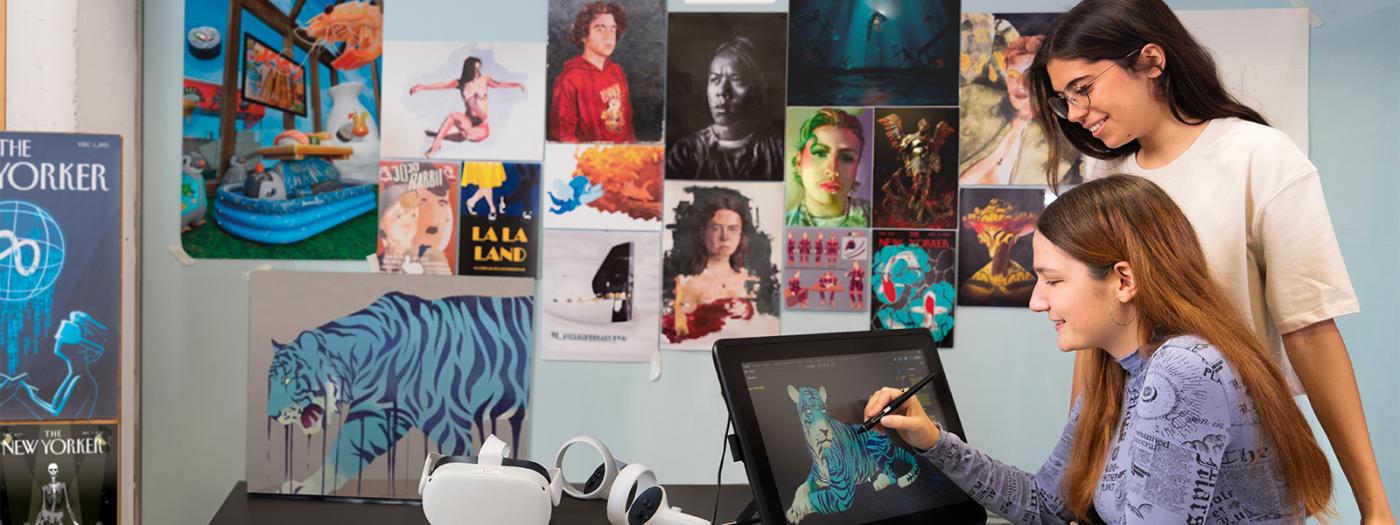Titular Professors
Lesson 1. Introduction to ZBrush.
Introduction to digital sculpture. Presentation of the ZBrush (i) program environment
ZBrush (ii) Environment - Primitive Forms / Polymesh & Basic Brushes
Lesson 2. Modeling basic shapes.
Introduction to Alphas
Exercise 1: Building a stone / Modeling / Texture
Use of Alphas (i) / Shadow & Depth
Lesson 3. Hard Surfaces.
Introduction to hard surface modeling
Exercise 2: Helmet / Subtools / Wireframe / panel loops / finishing
Lesson 4. Modeling anatomical shapes.
Introduction to basic anatomical shape modeling
Exercise 3: Hand / basic structure, volume, muscles, finishing
Exercice 4: Head / basic structure, volume, muscles
Exercice 5: Man to Woman / modeling and transformation of the morphology of a face.
Modeling complex shapes: the human body
Lesson 5. Aplhas.
Use of Aplhas (ii) and desing of own Alphas
UV application to clothes
Ejercicio 6: Clothes
Lesson 6. Rigging.
Introduction to zSpheres
Antrophomorfic model for
rigging Exercise 7: ZSpheres
Lesson 7. Personal project.
Antrophomorfic character design
Concepts / turn around /modelado básico
Fece and expression
Textures and finishing
In the subject will work through different teaching methodologies. At the beginning of each unit there will be
a master class where the teacher will introduce certain basic concepts and contextualize the student in the
historical-artistic moment. From here, the student will have a series of audiovisual material and didactic
activities based on the active methodologies with which he will acquire the knowledge of the different
stylistic periods and the specific vocabulary of the discipline. From the beginning of the course the student
will be presented with a group project to develop throughout the course and to present orally and in writing
at the end of the course.
MD 0: Master Class.
MD 1: Classes with problems and exercices
MD 4: Seminar.
MD 6: Project based learning.
MD 8: Gamification
MD 9: Peer Instruction.
Standard evaluation:
Exercices from lessons 1-2-3-4-5-6: 60% (10% each)
Assestment of the practical knowledge from the overpassing of those exercises
Minimum grade required to arise average >4/10
Late deliveries will be penalized with -0.5 points for each day of delay.
Presentation of the personal project: 30%
Lesson 7
Minimum grade required to arise average >4/10.
Continuous evaluation: 10%
Involvement of the student in the classes, delivery of the exercises, final portfolio and criteria of the teacher.
Special evaluation:
In cases of exceptionality (accident, illness ...), students have the option to pass the subject by passing a special
Escultura digital I Curs 2024-2025
Digital Sculpture I 2024-2025 Academic year
Escultura digital I Curs 2024-2025
evaluation exam.
Criteria for standard and special evaluation:
In the event that the exams, exercises or works to be delivered by the student do not present a correct
written, grammatical and orthographic expression, the maximum grade will be a 4.
If the conditions are not fulfilled for passing the convocation, the maximum grade will be a 4. The student will
have the right to review the exam grade (evaluation) on the day assigned by the professors. Upon this
revision, the student?s grade may improve or decline
VV.AA. Beginner's Guide to ZBrush. 3dtotal Publishing . 2017 ISBN: 978-1-909414-50-1
